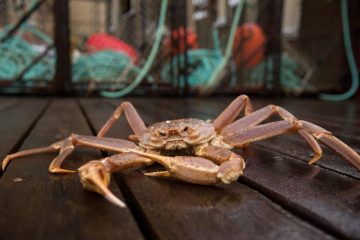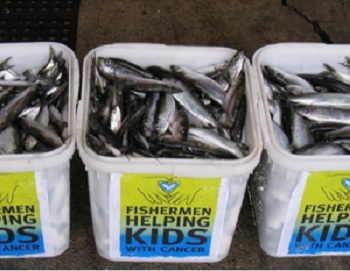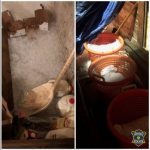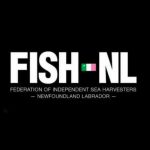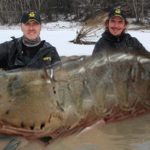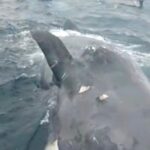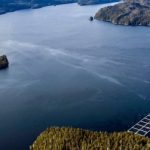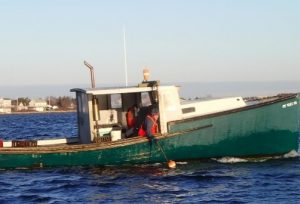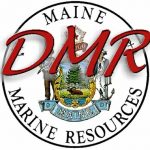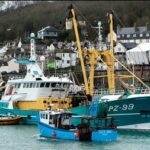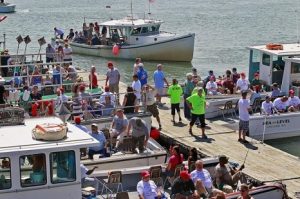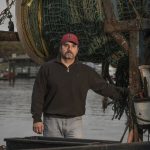Tag Archives: Bering Sea
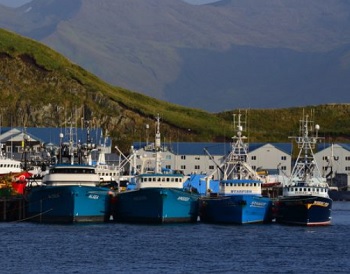
Coronavirus: Fears fuel assault on Bering Sea fishing boat, federal prosecutors charge
Federal prosecutors have charged a worker on a Bering Sea factory fishing boat with assault after he allegedly broke the eye socket of another person who criticized him for serving food without gloves during the coronavirus pandemic. Prosecutors say Maurice Young was a housekeeper and galley assistant on the 235-foot SeaFreeze America, which has about 65 crew members and is homeported in Seattle. At the time of the alleged assault, on Monday, the ship was underway about 120 miles east of the Pribilof Islands. >click to read< 16:00
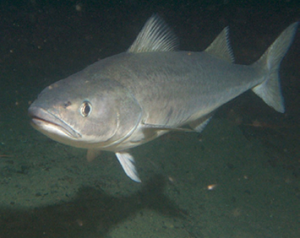
There’s a new fight over Bering Sea black cod.
Record numbers of young black cod, also known as sablefish, are swimming off Alaska’s coast; scientists estimate that this group of fish, which had huge reproductive success in 2014, is twice the size of the next-largest on record, from 1977. The small-boat fishermen who catch black cod, many of whom live in Southeast Alaska, are eagerly waiting for the young fish to grow larger and commercially valuable. But they’re getting frustrated seeing increasing numbers of black cod caught accidentally, as bycatch, by the Seattle-based trawlers that target lower-value species in the Bering Sea, like the pollock that go into McDonald’s Filet-O-Fish sandwiches. >click to read< 16:43
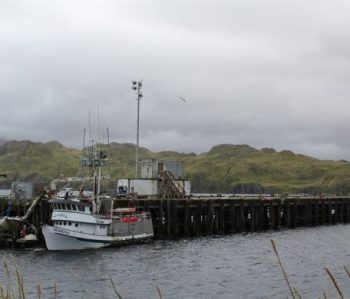
Amid a big fight for cod in the Bering Sea, can remote Adak survive?
A heap of slimy fish heads nearly filled a deep tote. Above, workers finished sorting stacks of decapitated halibut they had run through a grim mechanical apparatus. “Right here we have a guillotine blade,” said Mike Lauer, showing off the de-heading device. “We’ll sell the cheeks, and then we can use the heads for bait,” he added. Lauer is in charge of quality control for Golden Harvest, a processing plant on Adak that’s at the center of a fish war in the Bering Sea pitting two small Aleutian Island communities against large out of state fishing interests. And the implications of that fight could stretch to other coastal fishing towns in Alaska. >click to read< 21:08
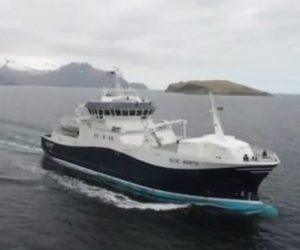
Bristol Bay Native Corporation to acquire two giants of Alaska’s Pacific cod fishery
Clipper Seafoods and Blue North Fisheries are freezer longline catchers, two giants of the Pacific cod industry. Clipper has six hook and line vessels, and after retiring one of its vessels, Blue North will have four. Now, the Bristol Bay Native Corporation is poised to acquire all of them. “Blue North and Clipper Seafoods, as of Friday last week, have officially merged together. And then BBNC’s intentions are to acquire the merged companies – the Blue North Clipper Group – on Sept. 30.” Audio, >click to read< 18:20
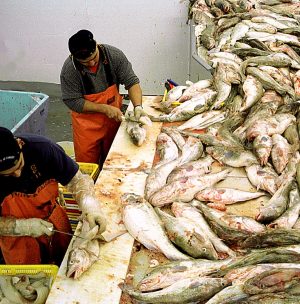
NPFMC takes first step toward rationalizing P-cod fishery
Pacific cod fishermen in the Bering Sea and Aleutian Islands, one of the last remaining unrationalized federal fisheries in Alaska, may finally have to cross that bridge. The North Pacific Fishery Management Council passed a motion at its meeting Feb. 9 to take action on the Pacific cod fishery, which is facing a number of issues in abundance, processing and participation. Depending on public review and the council’s action at the next several meetings, the Pacific cod fishery could see significant changes to seasons, limits and vessel participation. The motion hinges around an analysis developed on the trawl catcher vessel fishery and releases Alternatives 1, 2, 3 and 6 for public review separate from the rest. Rationalization, also known as catch shares,,, >click to read<
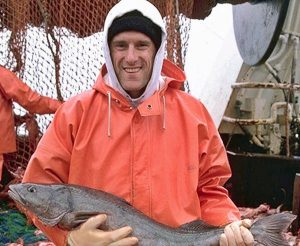
Sablefish season to open with slight increase, along with uncertainty
Alaska’s sablefish fishermen will go into the 2019 season in March with no change to their overall catch limit but some debate about the state of the stock. Sablefish, also known as black cod, regularly opens to fishing in Alaska in March, at the same time as the halibut fishery. Commercial fishermen in the Bering Sea, the Gulf of Alaska and Southeast Alaska catch them using trawls, longlines or, in some areas, pots. Fishermen landed about 13,956 metric tons of them last year between the Gulf of Alaska and the Bering Sea/Aleutian Islands fisheries. >click to read<19:55
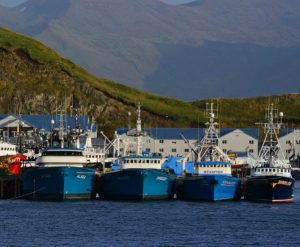
Government shutdown, if it continues, could cost Alaska’s lucrative Bering Sea fisheries
Even if the shutdown does persist, the federal government will allow the Bering Sea fisheries to start as scheduled, with an initial opening for cod Jan. 1, and a second opening for pollock and other species Jan. 20. But the fisheries are heavily regulated, and before boats can start fishing, the federal government requires inspections of things like scales — for weighing fish — and monitoring equipment that tracks the number and types of fish being caught. And the National Marine Fisheries Service, which regulates the Bering Sea fisheries, isn’t doing those inspections during the shutdown. >click to read<20:16
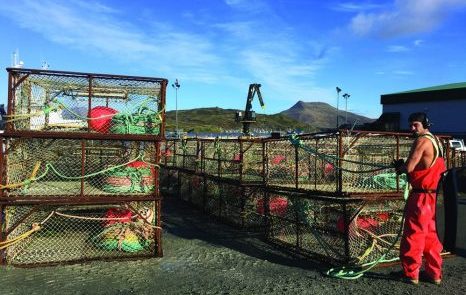
Snow crab up, king crab quota down in Bering Sea
It’s not much, but there is a red king crab season. And snow crab is up 45 percent, and Tanners are down slightly, but at least that one will go forward due to a revised harvest strategy.,, Nichols expects fewer boats fishing this year, with fishermen combining quotas onto one boat that otherwise would have been fished by two vessels, because of the harvest reduction leading to the efficiency move. At least there is a red king crab season, despite earlier fears of a complete cancelation, according to Unalaska Mayor Frank Kelty. >click to read<11:30
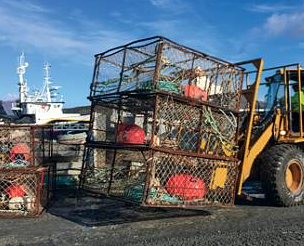
King crabbing set to begin with record low quota
Bering Sea commercial crabbing starts next week, with the smallest quota for Bristol Bay red king crab in over 30 years of 4.3 million pounds, a 35 percent decrease from last year’s 6.6 million pounds. The last time there was such a low number when a fishery was held was in 1985, at 4.1 million pounds, according to Alaska Department of Fish and Game Assistant Area Management Biologist Ethan Nichols, in Unalaska. >click to read<08:29
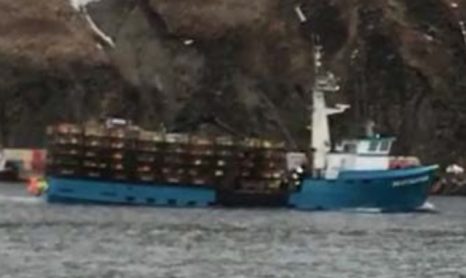
NTSB Says Icing Caused Fatal Sinking of FV Destination in Bering Sea, issues related Safety Alert
The National Transportation Safety Board has issued a marine accident brief >click to read<and a related safety alert>click to read< warning mariners of the dangers of icing following the agency’s investigation of the sinking of the fishing vessel Destination in the Bering Sea last February with the loss of all six crew members. The 110-foot, 196-gross ton, fishing vessel Destination sank in frigid, remote waters 2.6 miles northwest of St. George Island, Alaska, on February 11, 2017. >click to read<09:36
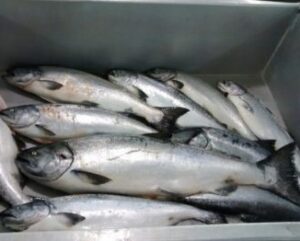
With New Kuskokwim King Salmon Data Released, Bering Sea Bycatch Restrictions Come Under Review
New state data reveals that the number of king salmon returning to the Kuskokwim River has been inflated for decades. Now, the state is recommending that the body governing the Bering Sea pollock fishery adopt this new information. If it does, restrictions on the fleet’s bycatch of king salmon could tighten, and a long-voiced demand from Kuskokwim residents could be met. The North Pacific Fishery Management Council is meeting in Kodiak, Alaska this week. It’s scheduled to make a decision by Monday on how many king salmon can be caught incidentally by commercial fishing boats targeting pollock in the Bering Sea. >click to read<08:33

The Boat at the Bottom of the Sea
Captain William Prout was up early. Or was it late? During crabbing season it was sometimes hard to tell the difference. The day before, Friday, February 10, 2017, Prout and his crew had offloaded a batch of snow crab on the remote Bering Sea island of St. Paul. Then they’d turned the Silver Spray around and motored back out to the fishing grounds to collect their remaining crab pots. At 5am on Saturday, Prout pulled his anchor and pointed his bow southeast. Hours of darkness still remained—dawn came late on the Bering Sea in February. Captain Prout stayed in the wheelhouse, drinking coffee with his son and looking out at the icy night, as the Silver Spray churned along. >click to read<20:06

‘The truth needed to come out’: A decade after the sinking of the Alaska Ranger, a survivor changes his story
On the 10th anniversary of the sinking of the Seattle-based fishing vessel, a survivor and key witness says he left out part of the story — an incident he believes had grave consequences. Rodney Lundy has a story to tell. He says he should have told it a lot sooner. As the Seattle-based Alaska Ranger prepared to head out to the Bering Sea to fish for Atka mackerel, Lundy, an assistant engineer, says he saw trouble. It was the evening of March 21, 2008, and Lundy says crew had stacked bundles of netting around one of two air vents.,, Lundy wanted the gear moved. The conversation grew heated as fishmaster Satoshi Konno — leader of a small group of Japanese crew members — refused. >click to read<14:07
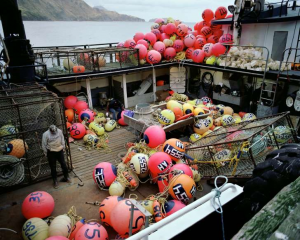
Inside the insane, dangerous lives of Alaskan crab fishermen who work 20-hour days in a ‘constant barrage of storms’
Being a crab fishermen on Alaska’s Bering Sea is a very dangerous job with back-breaking labor and 20-hour work days. In 2002, photographer Corey Arnold decided to give it a try. He ended up doing it for nearly a decade and brought his camera along for the many weeks at sea. The Bering Sea is constantly suffering storms which make the work even more difficult and dangerous. While working long, strenuous hours on the Rollo, Arnold often stole away with the captain’s permission to grab his camera and photograph the crew and the ship. Arnold eventually put together “Fish Work: Bering Sea,” a documentation of his seven adventurous and dicey crab seasons aboard the Rollo. Photo’s >click to read< 13:58
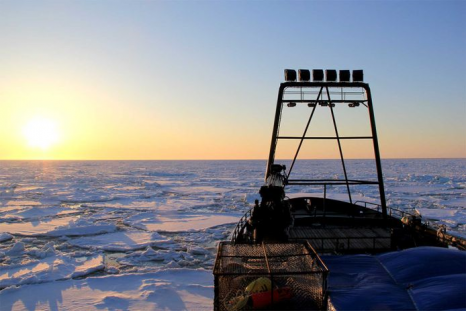
Trapped in the Arctic ice
When the crab fishing vessel Kiska Sea ventured through rough weather into the far northern arctic floes of the Bering Sea, it was seeking a million-dollar payday. But that hunt in 2013 gave the crew more than they had bargained for. Near-hurricane-force winds had pushed a massive ice pack southward, swallowing the ship’s crab pots whole and threatening the vessel itself. The Kiska Sea found itself surrounded by ice with no clear way out. >click to read< 14:27
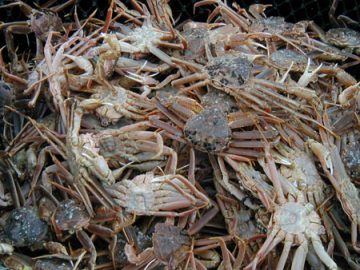
Bering Sea snow crab fishing underway
Bering Sea snow crab fishing was just getting underway, and the first deliveries were expected later this week, according to Ethan Nichols of the Alaska Department of Fish and Game in Unalaska/Dutch Harbor when the snow crab quota was cut back again this year by the Alaska Department of Fish and Game. There is a reduced Bering Sea Tanner crab season, thanks to new rules allowing fishing when fewer female crustaceans are present. And small boats in the Unalaska Island area have a Tanner fishery for the first time in two years. >click here to read<13:03
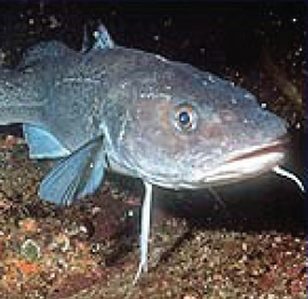
Kodiak officials prepare for ‘disaster’: An 80 percent decline in Gulf cod catches in 2018
Kodiak officials already are drafting a disaster declaration due to the crash of cod stocks throughout the Gulf of Alaska. The shortage will hurt many other coastal communities as well. Gulf cod catches for 2018 will drop by 80 percent to just under 29 million pounds in federally managed waters, compared to a harvest this year of nearly 142 million pounds. The crash is expected to continue into 2020 or 2021. Cod catches in the Bering Sea also will decline by 15 percent to 414 million pounds. In all, Alaska produces 12 percent of global cod fish. click here to read the story 09:12
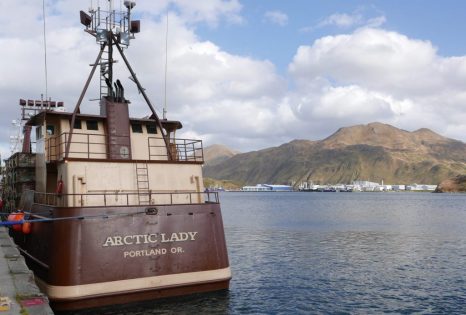
Beyond Deadliest Catch: The Fisherman in Pursuit of One of the World’s Great Delicacies
Dan Jansen had been awake for about a day and a half on his first-ever trip as captain of a crab-fishing boat way back in 1986. When there was finally a lull, Jansen left the wheelhouse to get some rest. His eyes hadn’t been shut for more than 15 minutes when he heard what sounded like an explosion. In the time it took for his feet to swivel from his bunk to the floor, Jansen’s stateroom had filled up with more than a foot of water. click here to read the story 10:46

Coast Guard: Russia and U.S. Working Well Together in the Bering Sea, Arctic
Unlike other parts of the world, the U.S. and Russia work well together in the Bering Sea and the Arctic. The pair is enforcing fishing regulations and other laws, conducting search and rescue operations. Moscow and Washington are sending the International Maritime Organization a joint recommendation for safe shipping routes through northern waters, the head of the U.S. Coast Guard in Alaska said on Wednesday. “We see the relationship with Russia [in the Arctic] as a bright spot,” said Rear Adm. Michael McAllister,,, click here to read the story 16:10
In a Bering Sea battle of killer whales vs. fishermen, the whales are winning
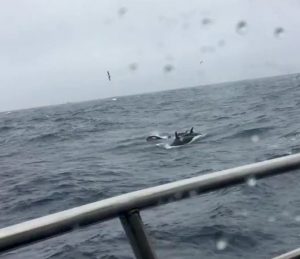 In the Bering Sea, near the edge the continental shelf, fishermen are trying to escape a predator that seems to outwit them at every turn, stripping their fishing lines and lurking behind their vessels. The predators are pods of killer whales chasing down the halibut and black cod caught by longline fishermen. Fishermen say the whales are becoming a common sight — and problem — in recent years, as they’ve gone from an occasional pest to apparently targeting the fishermen’s lines. Fishermen say they can harvest 20,000 to 30,000 pounds of halibut in a single day, only to harvest next to nothing the next when a pod of killer whales recognizes their boat. The hooks will be stripped clean, longtime Bering Sea longliner Jay Hebert said in a phone interview this week. Sometimes there will be just halibut “lips” still attached to hooks — if anything at all. click here to read the story 07:35
In the Bering Sea, near the edge the continental shelf, fishermen are trying to escape a predator that seems to outwit them at every turn, stripping their fishing lines and lurking behind their vessels. The predators are pods of killer whales chasing down the halibut and black cod caught by longline fishermen. Fishermen say the whales are becoming a common sight — and problem — in recent years, as they’ve gone from an occasional pest to apparently targeting the fishermen’s lines. Fishermen say they can harvest 20,000 to 30,000 pounds of halibut in a single day, only to harvest next to nothing the next when a pod of killer whales recognizes their boat. The hooks will be stripped clean, longtime Bering Sea longliner Jay Hebert said in a phone interview this week. Sometimes there will be just halibut “lips” still attached to hooks — if anything at all. click here to read the story 07:35
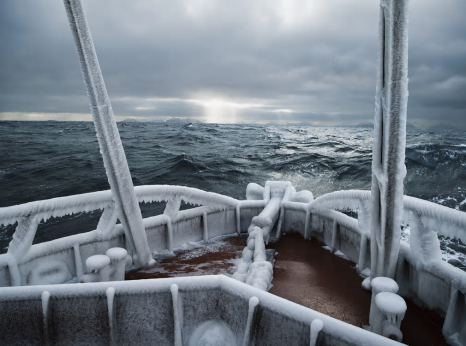
Aleutian Dreams: life as an Alaska fisherman – in pictures
Corey Arnold is a fine art photographer and a commercial fisherman, working the stormy waters of the Bering Sea by Alaska. His latest work documents life in this remote wilderness, both at sea and on the shore, capturing trawlers, foxes, eagles and the grandeur of the scenery. Aleutian Dreams can be seen at Charles A. Hartman Fine Art in Portland, Oregon, until 27 May. The photos are stunning, and worth a look. click here to view the images. 18:32
Alaska’s Bering Sea snow crab quota down 50 percent
 In mixed news for Alaska’s crabbers, the state’s Department of Fish and Game announced the opening of the Bering Sea snow crab season will take place on 15 October, but with an allotted catch that is half that of last season’s. A report released Thursday, 6 October by Fish and Game put the total allowable catch (TAC) for the 2016/17 season at 21.57 million pounds, which would be the fishery’s lowest in 45 years. Around 19.4 million pounds of the TAC will go to the individual fishing quota, with the rest going to the community development quota. “We’ve seen a declining trend since the 2006/7 season,” said Robert J. Foy, the head of NOAA’s “Crab Lab” in Kodiak. Read the rest here 11:44
In mixed news for Alaska’s crabbers, the state’s Department of Fish and Game announced the opening of the Bering Sea snow crab season will take place on 15 October, but with an allotted catch that is half that of last season’s. A report released Thursday, 6 October by Fish and Game put the total allowable catch (TAC) for the 2016/17 season at 21.57 million pounds, which would be the fishery’s lowest in 45 years. Around 19.4 million pounds of the TAC will go to the individual fishing quota, with the rest going to the community development quota. “We’ve seen a declining trend since the 2006/7 season,” said Robert J. Foy, the head of NOAA’s “Crab Lab” in Kodiak. Read the rest here 11:44
Ten-Year Review for Bering Sea/ Aleutian Islands Crab Ratz Management Program
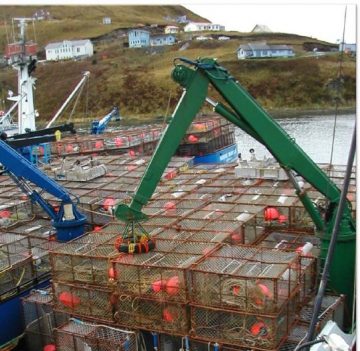 North Pacific Fishery Management Council June 2016 – EXECUTIVE SUMMARY This document is a 10 year review of the Bering Sea/ Aleutian Islands (BSAI) Crab Rationalization (CR) Program. Implemented in 2005, the CR Program is a “voluntary three pie cooperative” program which allocates BSAI crab resources among harvesters, processors, and coastal communities. The CR Program was designed to address conservation and management issues associated with the previous over-capitalized derby fishery, reduce bycatch and associated discard mortality, and increase the safety of crab fishermen by ending the race for fish. The program issued harvest quota shares to vessel owners (License Limitation Program license holders) and captains, as well as processor quota shares to processors based on historic participation to protect investment in and reliance on the program fisheries. Program components include quota share allocation, processor quota share allocation, individual fishing quota and individual processing quota issuance, quota transfers, use caps, crab harvesting cooperatives, protections for Gulf of Alaska groundfish fisheries, an arbitration system, monitoring, economic data collection, and cost recovery fee collection. Read it here 18:32
North Pacific Fishery Management Council June 2016 – EXECUTIVE SUMMARY This document is a 10 year review of the Bering Sea/ Aleutian Islands (BSAI) Crab Rationalization (CR) Program. Implemented in 2005, the CR Program is a “voluntary three pie cooperative” program which allocates BSAI crab resources among harvesters, processors, and coastal communities. The CR Program was designed to address conservation and management issues associated with the previous over-capitalized derby fishery, reduce bycatch and associated discard mortality, and increase the safety of crab fishermen by ending the race for fish. The program issued harvest quota shares to vessel owners (License Limitation Program license holders) and captains, as well as processor quota shares to processors based on historic participation to protect investment in and reliance on the program fisheries. Program components include quota share allocation, processor quota share allocation, individual fishing quota and individual processing quota issuance, quota transfers, use caps, crab harvesting cooperatives, protections for Gulf of Alaska groundfish fisheries, an arbitration system, monitoring, economic data collection, and cost recovery fee collection. Read it here 18:32
Tanner crab fishermen receive OK to catch quota
It’s official.  fishermen can catch their whole quota, and not leave 1.4 million pounds unharvested at the bottom of the Bering Sea because of a surprising provision in the federal rules governing the crab rationalization program that blindsided fishermen and processors late last year. That oversight nearly cost the industry some $5 million. That’s good news as the Tanner fishery moves along, with 72 percent of the eastern Tanners harvested as of Monday for 8.1 million pounds by eight boats catching an average of 37.4 crab per pot. Read the rest here 12:30
fishermen can catch their whole quota, and not leave 1.4 million pounds unharvested at the bottom of the Bering Sea because of a surprising provision in the federal rules governing the crab rationalization program that blindsided fishermen and processors late last year. That oversight nearly cost the industry some $5 million. That’s good news as the Tanner fishery moves along, with 72 percent of the eastern Tanners harvested as of Monday for 8.1 million pounds by eight boats catching an average of 37.4 crab per pot. Read the rest here 12:30
Big groundfish harvest boosts Alaska seafood employment
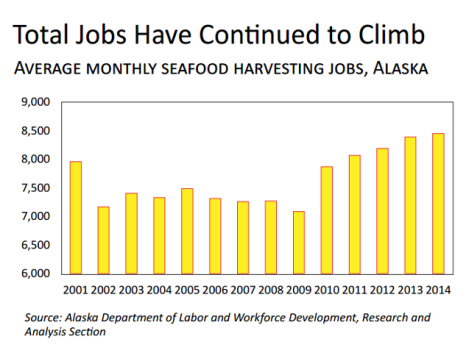 Employment in Alaska’s commercial fishing sector grew last year, boosted by a swell in groundfish harvests, state labor economists reported today. Driven by large catches of pollock and cod in the Gulf of Alaska, Bering Sea, and Aleutian Islands, the number of commercial fishing jobs in Alaska grew by .7 percent in 2014, according to the Alaska Department of Labor. Jobs specifically tied to groundfish jumped by nearly 25 percent, or about 350 jobs, with gains made during every month of the year. Read the rest here 09:47
Employment in Alaska’s commercial fishing sector grew last year, boosted by a swell in groundfish harvests, state labor economists reported today. Driven by large catches of pollock and cod in the Gulf of Alaska, Bering Sea, and Aleutian Islands, the number of commercial fishing jobs in Alaska grew by .7 percent in 2014, according to the Alaska Department of Labor. Jobs specifically tied to groundfish jumped by nearly 25 percent, or about 350 jobs, with gains made during every month of the year. Read the rest here 09:47
NPFMC must strike a better balance on halibut bycatch – Charlie Wilber
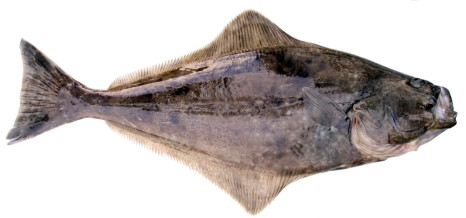 This commentary is written for all those who appreciate halibut. If you eat halibut, catch halibut, or have an interest in a healthy halibut resource you need to be aware of what happened at the North Pacific Fishery Management Council in Sitka this past week. Simply put, halibut stocks in the Bering Sea and Aleutian Islands (BSAI) area are down, and the problem is slowly affecting all of us. Read the rest here 11:07
This commentary is written for all those who appreciate halibut. If you eat halibut, catch halibut, or have an interest in a healthy halibut resource you need to be aware of what happened at the North Pacific Fishery Management Council in Sitka this past week. Simply put, halibut stocks in the Bering Sea and Aleutian Islands (BSAI) area are down, and the problem is slowly affecting all of us. Read the rest here 11:07
Seattle company has worst rate of halibut dumping and a lousy track record
 There are big differences within the bottom-trawl fleet that works the Bering Sea in how much halibut is caught and discarded, a Seattle Times analysis found. For the past four years, Fishing Company of Alaska, a Seattle firm, has had the fleet’s highest rate of dumping halibut, which federal rules say must be discarded if caught by trawlers. Through the years, the company has come under scrutiny for the use of Japanese fishmasters who help conduct the harvest. Read the rest here The struggle for power on doomed Alaska Ranger Satoshi Konno was a tall man with ramrod posture and a volcanic temper. Read the rest here 11:54
There are big differences within the bottom-trawl fleet that works the Bering Sea in how much halibut is caught and discarded, a Seattle Times analysis found. For the past four years, Fishing Company of Alaska, a Seattle firm, has had the fleet’s highest rate of dumping halibut, which federal rules say must be discarded if caught by trawlers. Through the years, the company has come under scrutiny for the use of Japanese fishmasters who help conduct the harvest. Read the rest here The struggle for power on doomed Alaska Ranger Satoshi Konno was a tall man with ramrod posture and a volcanic temper. Read the rest here 11:54
Could salmon sharks be factor in declining Bering Sea king salmon numbers?
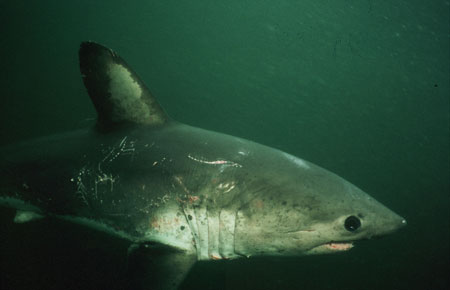 Given their name, it’s not surprising that salmon sharks eat salmon. But Alaska researchers are now asking whether the animals might have any impact on declining numbers of Bering Sea king salmon. “It’s too early to tell if salmon sharks have any impact on abundance on king salmon in the ocean, but it’s certainly another factor that should be investigated,” Seitz said in a phone interview from Fairbanks Wednesday. Read the rest here 11:42
Given their name, it’s not surprising that salmon sharks eat salmon. But Alaska researchers are now asking whether the animals might have any impact on declining numbers of Bering Sea king salmon. “It’s too early to tell if salmon sharks have any impact on abundance on king salmon in the ocean, but it’s certainly another factor that should be investigated,” Seitz said in a phone interview from Fairbanks Wednesday. Read the rest here 11:42
Guest Opinion: State needs to push for halibut protection – by John L. Beath
 The Pacific halibut may be an icon of our region, but over the past 10 years in the Bering Sea, it’s become increasingly obvious that we aren’t doing as good a job of protecting them as we should. A total of 62.6 million pounds of halibut were caught as bycatch, harvested unintentionally and thrown overboard dead. To compare, the hook-and-line fishermen targeting halibut only caught 69.7 million pounds in the same area over the same period of time. Read the rest here 10:52
The Pacific halibut may be an icon of our region, but over the past 10 years in the Bering Sea, it’s become increasingly obvious that we aren’t doing as good a job of protecting them as we should. A total of 62.6 million pounds of halibut were caught as bycatch, harvested unintentionally and thrown overboard dead. To compare, the hook-and-line fishermen targeting halibut only caught 69.7 million pounds in the same area over the same period of time. Read the rest here 10:52






